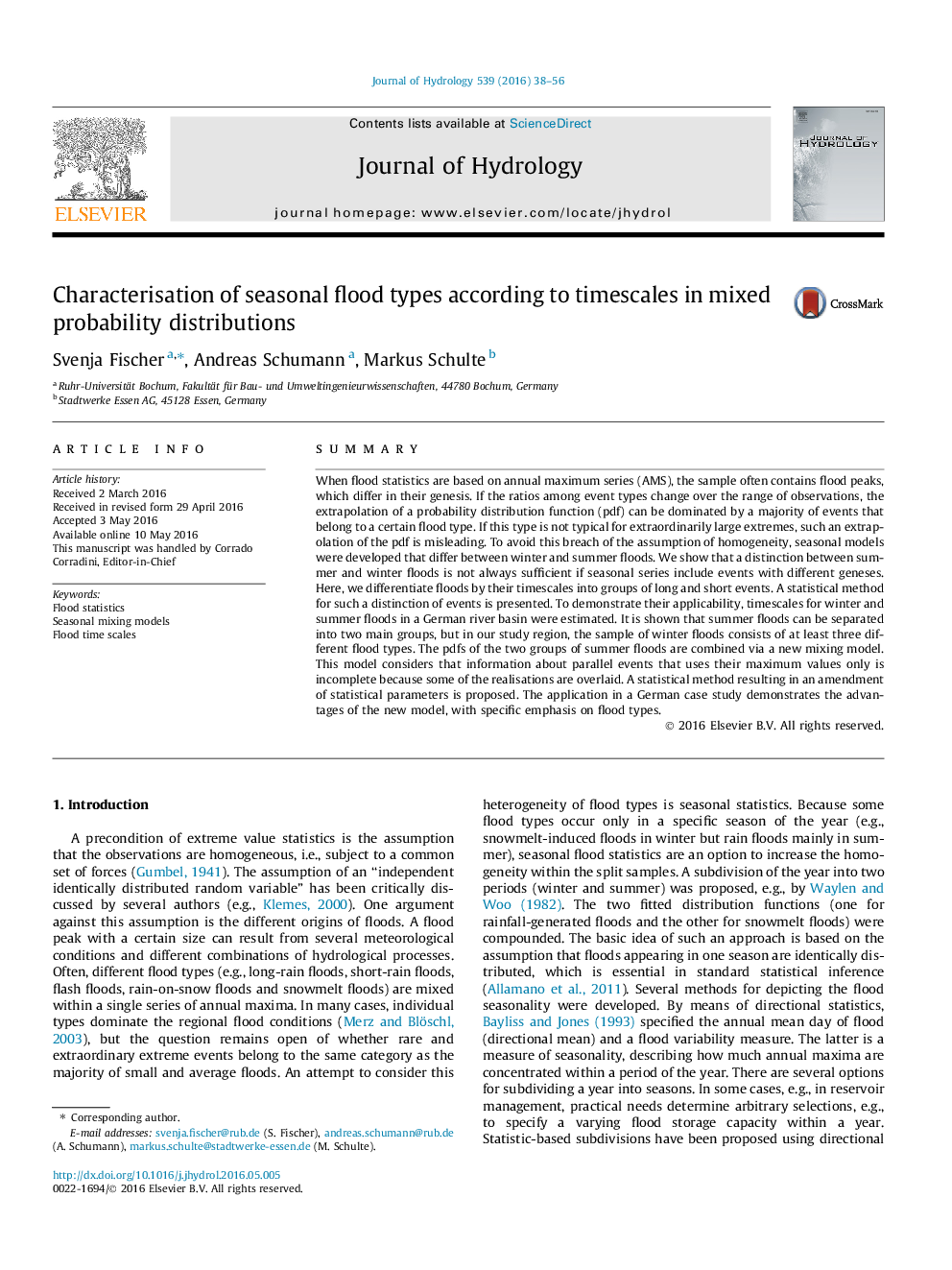| Article ID | Journal | Published Year | Pages | File Type |
|---|---|---|---|---|
| 6409903 | Journal of Hydrology | 2016 | 19 Pages |
â¢Usage of flood timescale to distinguish between short and long flood events.â¢Development of a new mixing model to consider winter, short and long summer floods.â¢Proposal of a method to reconstruct the overlaid information.
SummaryWhen flood statistics are based on annual maximum series (AMS), the sample often contains flood peaks, which differ in their genesis. If the ratios among event types change over the range of observations, the extrapolation of a probability distribution function (pdf) can be dominated by a majority of events that belong to a certain flood type. If this type is not typical for extraordinarily large extremes, such an extrapolation of the pdf is misleading. To avoid this breach of the assumption of homogeneity, seasonal models were developed that differ between winter and summer floods. We show that a distinction between summer and winter floods is not always sufficient if seasonal series include events with different geneses. Here, we differentiate floods by their timescales into groups of long and short events. A statistical method for such a distinction of events is presented. To demonstrate their applicability, timescales for winter and summer floods in a German river basin were estimated. It is shown that summer floods can be separated into two main groups, but in our study region, the sample of winter floods consists of at least three different flood types. The pdfs of the two groups of summer floods are combined via a new mixing model. This model considers that information about parallel events that uses their maximum values only is incomplete because some of the realisations are overlaid. A statistical method resulting in an amendment of statistical parameters is proposed. The application in a German case study demonstrates the advantages of the new model, with specific emphasis on flood types.
